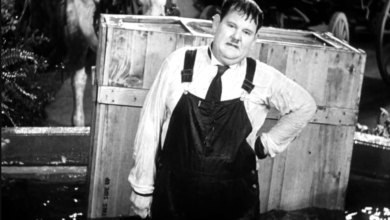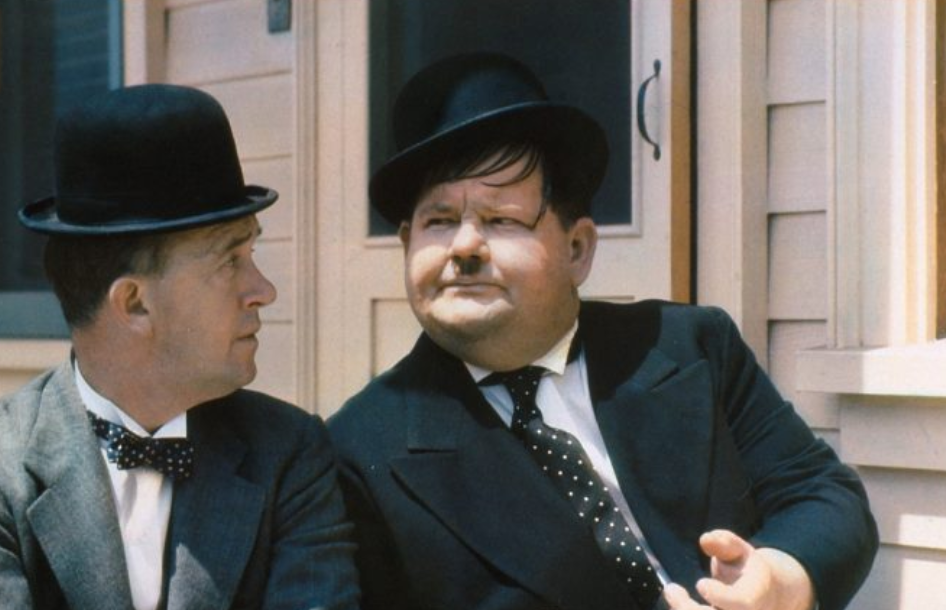Imagining the Unhappy Life of Stan Laurel

There is nothing surprising anymore about a sad clown.
So many melancholy tales have been told about the tortured lives of comedians that the pertinent question about a new story is not whether the entertainer is miserable but why. In his deeply researched historical novel “He” — which recounts the tumultuous life and triumphant career of Stan Laurel, the slender half of the double act of Laurel and Hardy — the Irish mystery and thriller writer John Connolly proposes some options.
There’s the long shadow of Charlie Chaplin, whose monumental success and undeniable genius torment Laurel, and the usual exploitation by Hollywood producers like the titan of silent comedy, Hal Roach. Then there’s the amoral, demanding “Audience,” always capitalized and often ominous. “The Audience will laugh at a cat being burned,” one characteristically cynical line begins. “The Audience will laugh because others are laughing.”
Written in spare, fractured prose from the perspective of a narrator who seems to be reporting from inside Laurel’s mind, this odd and ambitious book is so dense with show-business detail that it may alienate nonfans. Even Laurel and Hardy lovers may be put off by its somber, experimental mood. Laurel, the British vaudevillian who successfully made the transition from the silent era to talking pictures, is the center of the story but his name is never mentioned. He is referred to only as “he,” a self-conscious flourish in a narrative preoccupied with the disconnect between public and private lives.
The novel begins with, and continually returns to, the end of Laurel’s life. His mind is diminishing as he chases “butterfly memories,” which announce the subjective perspective of what follows. His partner, the American performer Oliver Hardy, comes off much better, a good friend whose loyalty provides Laurel’s one emotional anchor in a life of transitory relationships.
Most of the book is a chronological history of Laurel’s career, with an emphasis on his struggles to find a character for himself (whereas Hardy is presented as an actor with a gift for gags, Laurel is a gag man in search of a persona). It skips quickly from one career landmark to another, and describes the many women in his life whom he let down. But Connolly continually returns to the final days, when Laurel broods, despairs and expresses remorse for a life gone wrong.
Connolly’s staccato prose leans on short sentences and chapters (there are 203) that at their best evoke the style of Samuel Beckett, an admirer of Laurel and Hardy. The novel nicely brings Laurel down to earth, zeroing in on mundane concerns like salary, petty professional jealousies and challenges of the end of the silent era that you may not have considered, like the fact that film crews were suddenly told to be quiet on set. How were comics now supposed to know what was funny?
While “He” keeps a close eye on the business and artistry of movies, what’s actually on screen is often glossed over. There’s a brief mention of the famous scene where Laurel and Hardy struggle to carry a piano up a flight of stairs, but you don’t really leave the book understanding why these comedians are such towering figures of film history. Of course, this is a novel, not a critical study, and perhaps the biographical movie of Laurel and Hardy that comes out next year starring Steve Coogan and John C. Reilly will make up that ground.
And yet one closes this book still unsure about who Stan Laurel really was, though this may be part of the point. Trav S.D., who wrote the excellent history “Chain of Fools,” once described Laurel on screen as “completely vacant, like a beast of burden, like a black hole.” Connolly takes us behind the scenes but the view isn’t much different. Laurel remains a cipher, a comic type, a star without a name.





